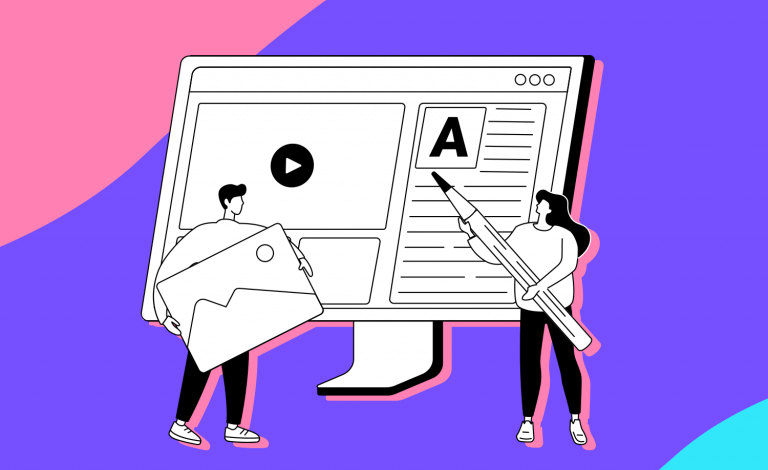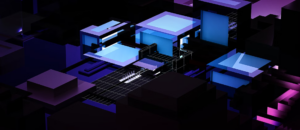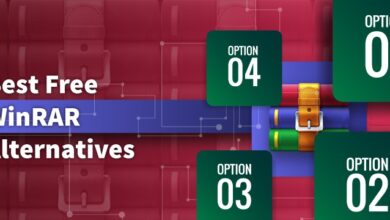The Role of Animation in UX Design: Tips and Examples

Animation is an often-overlooked element in UX design, but it has the potential to add a lot of value. Animation can help users understand concepts quickly, reduce cognitive load and make interfaces more engaging and enjoyable.
Whether you’re designing for desktop, mobile or web applications, animation should be used strategically to enhance user experience. In this blog post, we’ll discuss the role that animation plays in UX design and provide tips on how to effectively use animation in your designs as well as some examples of great animations from leading brands.

1. The role of animation in UX design
The magic of animation captivates users and breathes life into UX design like no other element. With the rapid advancements in technology and the ever-evolving digital landscape, incorporating animation into UX design has become an essential tool for crafting unique and memorable user experiences. Deployed thoughtfully, animation guides users through various aspects of an interface, providing context, and offering a sense of feedback in response to user actions. For instance, animated icons, micro-interactions, and transitions can not only delight users by adding an element of playfulness but also enhance overall usability. By analyzing examples such as Google’s Material Design and the animated swipe action on Tinder, we can gather inspiration and unlock the power of animation to create intuitive and engaging user experiences. So, buckle up and dive into the vibrant world of animation in UX design to explore its transformative potential and master the art of merging aesthetics with user satisfaction.
2. Why animation is important for user experience
Animation is an invaluable tool to enhance user experience, providing not only aesthetic charm but also serving essential functional roles. Through subtle movements and transitions, animations can improve the overall user experience by guiding users as they navigate through a digital product, facilitating their interaction with various elements. Furthermore, animations can make complex tasks simple by providing visual feedback, thereby reinforcing the user’s actions and minimizing any confusion. They also contribute to a more engaging, delightful experience by adding personality and emotional resonance to a design, ultimately forming a stronger connection between the user and the product. By studying real-life examples and incorporating clever animation techniques, designers can craft a mesmerizing user experience that merges both form and function while surpassing user expectations.
3. How animations can be used to improve navigation and usability
The integration of animations in a SaaS design strategy has the potential to significantly enhance navigation and usability for users. In today’s fast-paced digital world, utilizing animations can allow businesses to create an extraordinary user experience that ultimately drives satisfaction and retention. Animations can be employed to guide users more intuitively through complex interfaces and workflows in a smooth and enjoyable way. By incorporating subtle transitional movements and visual cues, users can effortlessly navigate the platform with a better understanding of the hierarchical structure and intended workflow in place. Moreover, animations can make a platform appear more responsive, establishing a more engaging and interactive experience. Ultimately, the thoughtful application of animation in your SaaS design strategy will elevate usability and navigation performance while delighting the user, making a lasting impact on customers, and setting your product apart from competitors.
4. Tips on creating effective animations for UX design
Enhancing the user experience with creative animations has become a trend in UX design. As designers embrace this trend, it is crucial to ensure that these animations are purposeful and effectively communicate the intended message. One valuable tip when designing animations for UX is to remain focused on creating functional, yet engaging user interfaces. Utilize motion as a tool for simplifying complex interactions and conveying information smoothly, making users feel at ease when navigating your product or app. Furthermore, consider the user’s speed of browsing and interaction; this will help determine the appropriate amount and duration of animations. Remember that consistency is key, and keeping a uniform design language throughout your animations will ensure users can understand and remember key interactions. Finally, test and update your animations frequently to adapt to users’ evolving expectations and preferences, ensuring a delightful experience that keeps users returning.
5. Benefits of incorporating animation into user experiences
The incorporation of animation into user experiences can work wonders for both the designer and the end user, resulting in a more engaging and interactive platform. By utilizing animation in UX design, it becomes easier to create a visually stunning interface that not only grabs the user’s attention but also guides them effortlessly through a site or application. The benefits of incorporating animation span across various aspects of user experience such as improved user satisfaction, efficient communication of complex concepts, and enhanced connection with the target audience. Additionally, when appropriately used, animation aids in improving the overall flow and navigation of a platform, by delivering smoother transitions and less disorientation. Examples of such animations include loading indicator animations or interactive transitions that respond to user inputs. Ultimately, thoughtfully crafted animations contribute positively to the aesthetic quality of a platform, fostering a dynamic environment that reduces user fatigue and promotes better engagement with the content.
6. Examples of using animation in UX design
One striking example is the use of animated micro-interactions, which are subtle motions that occur in response to a user action, such as hovering over a button or submitting a form. These animations can add a delightful surprise for your users while also providing valuable feedback that helps make each interaction feel more intuitive. Another intriguing application of animation can be seen in the use of skeuomorphic animations, which mimic real-world objects or materials to ground the digital experience in a familiar context. By thoughtfully incorporating these animations, designers can create a stronger connection between the user and the interface, making it more engaging and satisfying to use. Additionally, the strategic use of animated page transitions or loading indicators can help maintain user interest and minimize frustration during wait times. By showcasing these examples of animation in UX design, we can see how adding a layer of motion can breathe life into our digital experiences, keeping users engaged and immersed like never before.

7. Potential pitfalls when using animations in UI/UX designs
There’s no denying that animations can significantly enhance the UX design, but it’s essential to understand potential pitfalls when incorporating them into your UI/UX designs. Mastering the balance between utilizing animations for their aesthetic and functional benefits while avoiding overdoing it is vital to the success of the overall design. Be cautious not to create a visually overwhelming or excessively complicated interface, as this may distract or confuse users. Furthermore, ensure that animations are purposeful and add value to the user’s experience, rather than being superfluous or mere decorations. By being mindful of these potential issues, you can skillfully incorporate animations in your UX designs, elevating the overall experience and engaging users through these captivating and dynamic elements.
Final Words
In conclusion, animation can be a powerful tool for creating engaging user experiences. Animation has the potential to effectively communicate complex concepts, improve navigation and flow within an interface, foster connection with target users, and enhance the aesthetic quality of UX designs. However, it’s essential to understand the potential pitfalls when incorporating animations into your UI/UX design in order to ensure that they are used purposefully and not excessively. By leveraging these cognitive neuroscience principles appropriately while avoiding overdoing it, you will be able to create captivating digital experiences that keep users engaged and immersed like never before!



